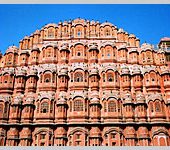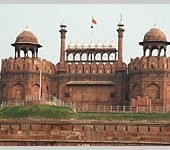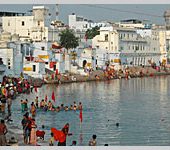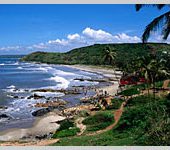Ranthambore National Park is one of the largest and most famous national parks in northern India. It is situated in Sawai Madhopur district of southeastern Rajasthan, about 130 km from Jaipur, which is also the nearest airport. The nearest town and railway station is at Sawai Madhopur, about 11 km away.
RANTHAMBHORE TIGER RESERVE
The Ranthambhore Tiger Reserve, often misspelled as Ranthambore, lies between latitudes 25 degrees 41′ North to 26 degrees and 22′ North and longitudes 76 degrees 16′ East to 77 degrees 14′ East. The Reserve lies in Rajasthan’s eastern districts of Sawai Madhopur and Karauli. Chambal river lies on the eastern side of the tiger reserve, at a distance of a few kilometers and the river Banas (a tributary of Chambal) flows through the reserve, from the north-west to the south-east, dividing the project tiger reserve into two equal halves – the Kela devi Sanctuary and the other parts of the Reserve.
Kela devi Sanctuary on the north-east of the river Banas, lies in the Karauli district. This wildlife sanctuary is slightly smaller than 700 square kilometers and was a part of the Karauli state before independence. The Kela devi Sanctuary along with some other smaller forests are categorized as the Buffer area of the Ranthambore Tiger Reserve. The approach to Kela Devi Sanctuary is through the town of Gangapur city, on the main Delhi – Mumbai rail route, 290 kilometers South-east of Delhi.
The other parts of the Reserve, including the famous Ranthambhore national park, are 640 square kilometers in area and lie to the south-west of the river Banas, almost totally in the Sawai Madhopur district. These include the Ranthambore national park, Sawai Madhopur Sanctuary, Sawai Man Singh Sanctuary and the Qualji Closed area. Almost all these forests were a part of the Jaipur state of Rajasthan, before independence. The approach to this part of the Project Tiger Reserve is through the town of Sawai Madhopur, which is on the main Delhi – Mumbai rail route, at a distance of 362 kilometers from Delhi. By road, Sawai Madhopur is 440 kilometers from Delhi via Jaipur and Tonk.
General Information
Area: 188.40 km2
Altitude: 554ft above sea level
Climet: highest temperature reaches to 46°C and minimum of 23°C.
Languges: spoken in Ranthambore are Dhundhari (a dialect of Rajasthani) and Hindi
What To See
- Jogi Temple
- The Khandar Fort
- Ranthambore Park
- Ganesh Chaturthi Fair
- Kaila Devi Fair
- Guru ka Tal
- Surwar Lake
- Dausa
- National park
- ganesha temple
- Ranthambhore Fort
- Jain Temple
Architecture
Even though most of the Ranthambhore tiger reserve is open to visitors, most visitors visit only the Ranthambore national park. This is because the national park is the best tiger habitat in the entire Project Tiger reserve and has some fantastic wildlife viewing to offer. All the tiger safaris in Ranthambore are conducted in the national park because this is the only part of the entire Project Tiger reserve that has a healthy and visible population of wild tigers. The other parts of the reserve are not very rich in wildlife, definitely not as rich as the Ranthambore national park.
Regular visitors consider Ranthambore, as one of the best national parks in the world to see Bengal tigers, wild, in their natural habitat. But here you don’t just see Bengal tigers you see Jhumru, Machhli (from the “machali or fish” like mark on her cheek), Bachhi, Kankati and so on. Each of Ranthambore’s denizens are well identified and The Ranthambhore Bagh, with its trained team, is perhaps your best bet to know who is who. Ask the Dayals; they have been coming to Ranthambhore thrice every year since 1998.








